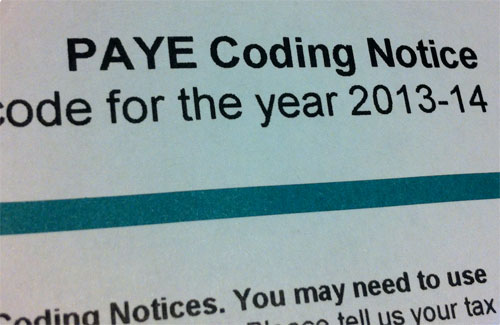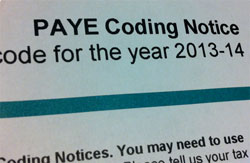HMRC has begun issuing PAYE tax coding notices for the 2013/2014 tax year.
The coding notice provides information on what an individual's tax code is, and how it is calculated. It is used to provide employers and pension providers with the level of tax free income an individual can have before being subject to income tax.
People will be receiving their new tax codes via post between this January (2013) and March (2013), with the tax codes being effective from April 6th 2013 - the start of the 2013/2014 tax year.
With the basic tax free personal allowance for people under 65 years old being increased from last year's £8,105 to £9,440, the most common tax code will be 944L (changed from the previous 810L).
People with an expected gross income of over £100,000 will see the effect of tapering on their tax codes, which will reduce the allowance by £1 for every £2 over the £100,000 income limit.
People with an income of over £118,880 will have a zero personal allowance and thus a 0T tax code.
If you have more than one income source, which HMRC is aware of, your tax code will make sure tax is deducted correctly across the incomes. Other income sources can include pension income, self employment etc
Read our full guide on tax codes for more information on how tax codes are calculated and how to correct incorrect information here



